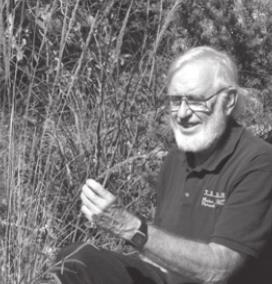Seed Dispersal: Observing Mother Nature at Work
Walking around the yard, as I do frequently, I often notice new plants that weren’t there before, and I always think about how that particular plant came to be in that particular spot.
For trees, some shrubs and some perennials, one way new plants are created are what are called “root sprouts” in which the root of the parent plant sends up a new shoot that is essentially a part of the parent plant and the shoot shares the root system of the parent. Even if the parent plant dies or the root connection between the parent and the sprout is broken, the sprout can usually make enough of its own roots to survive to maturity.
We have lots of root sprouts of post oaks, live oaks, blackjack oaks, all not too far from the parent, in our yard. Many of these may, in time, become mature trees. Some of our perennials also spread by root sprouts, sometimes more prolifically than we would like.
But we also have lots of what I call “volunteer” plants, be they trees or shrubs, wildflowers or grasses, that obviously came up from seeds, the source of which can sometimes be found close by and some of which clearly came from somewhere significantly further away.
As we were finishing the construction of our house in 2001, we built a high fence around about an acre so we could grow things that would otherwise be eaten by deer and livestock. So anything that has subsequently come up somewhere inside the fence, that we did not plant there and that is not a root sprout, must have come from somewhere else via a seed. And we have a lot of things that fit that category.
For woodies, we have numerous escarpment black cherries, one over 18 feet high; the closest mature one is about 500 yards away. We have several flameleaf sumacs that initially had to have been started by seeds, the nearest one I know of was about 600 yards away and is now dead. We also have many hackberries scattered around the yard, and I don’t know where the nearest mature one of those might be.
One of the first shrubs we planted as soon as we moved in was a possumhaw, a female that produced many red berries. We didn’t choose the best location for that possumhaw, and it has struggled to stay alive. However, we now have about a half dozen or so possumhaws in better locations, some over 300 feet away from the first one and doing quite well.
In 2002, I won a switchgrass plant as a “door prize” at a visit to the Bamberger Ranch. It is still quite healthy, and since the nearest switchgrass I know of outside our fence is about a ¼ mile away, I can assume that it was seed from the original plant that produced several more around the yard some distance from the first one.
We have Engelmann’s daisy, American basket flower, horse mint, Mexican hat, and bluebonnets, coming up in places in the yard where we never planted them, but none of them can be found outside the fence where the deer can get them. I could tell similar stories about other wildflowers and grasses, but I think you get the picture--seeds get dispersed, sometimes to great distances.
How does that happen? Seeds are dispersed in nature by wind, by being eaten by animals, by adhering to animal fur or feathers, and a few by expelling seeds some distance as the seed cases break open. Some trees have seeds that are fluffy or have “wings” that allow them to float in the breeze for some distance (cottonwood, maples), and many forbs and grasses have fluffy seeds that also blow around (milkweeds, some bluestems).
Some species that have seeds that stick to animal fur (sandburs, cockleburs, beggar’s ticks) are carried around that way. Most species that produce berries or small fruit that contain seeds are dispersed by birds or other animals eating the fruit and leaving the seeds in their droppings, an ideal medium for seed germination.
So Mother Nature intended for plants to “go forth and multiply”, and by my observations, she is very successful even in the 21st century, and sometimes in competition with humans. The reason many people never notice “volunteer” plants is that the deer found them first.
Until next time…
Jim Stanley is a Texas Master Naturalist and the author of the books “Hill Country Ecology,” “Hill Country Landowner’s Guide” and “A Beginner’s Handbook for Rural Texas Landowners.” He can be reached <at jstmn@ktc.com>. Previous columns can be seen at <www.hillcountrynaturalist.org>.


